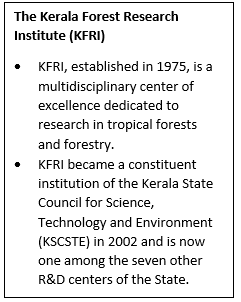SHINE Initiative
Context: Recently, the Indian Council of Medical Research (ICMR) launched the ICMR-SHINE Initiative, a nationwide student outreach programme.
About SHINE Initiative
- SHINE stands for Science, Health and Innovation for Nextgen Explorers.
- Organised by the Indian Council of Medical Research (ICMR) and the Department of Health Research (DHR), across its institutes and DHR- Model Rural Health Research Units (MRHRUs)
- The initiative aims to introduce students to the field of health and biomedical research, highlight ICMR’s contributions to improving the nation’s health, and motivate young learners to pursue careers in science and public health.
- ICMR-SHINE is aligned with the Prime Minister’s visionary call for “One Day as a Scientist.”
- A mascot named Dr. Curio was introduced as a friendly and relatable guide for the students throughout the day.
Nationwide Participation and Activities
- For the first time ever, all ICMR institutes will simultaneously host:
- Interactive sessions, scientific games, workshops
- Demonstrations in biomedical and health research
- The event welcomed 13,150 students in grades 9-12, drawing participants from over 300 schools across 39 districts in 16 states and union territories to various ICMR institutes.
- Students viewed four specially curated short films highlighting ICMR’s key initiatives: the development of Covaxin-India’s indigenous vaccine, the iDRONE initiative for innovative healthcare delivery, India’s TB elimination efforts, and Vishanu Yudh Abhyas – a nationwide mock drill to assess future pandemic preparedness.
- This initiative celebrates the 104th the birth anniversary of Prof. V. Ramalingaswami, a pioneer in Indian medical research.
- It reflects India’s commitment to scientific leadership and youth empowerment in health innovation.
Indian Council of Medical Research (ICMR)
- ICMR is the apex body in India for the formulation, coordination and promotion of biomedical research.
- Established in 1911, it is one of the oldest medical research bodies in the world.
- ICMR is headquartered in New Delhi, India.
RBI’s Financial Inclusion Index 2025
Context: Reserve Bank of India’s Financial Inclusion Index (FI-Index) rose to 67 in March 2025, reflecting growth.
More on the News
- The FI-Index rose to 67 in March 2025, up from 64.2 in 2024 and 53.9 in 2021, marking a 24.3% increase since inception.
About the FI-Index

- The FI-Index is a comprehensive index incorporating details of banking, investments, insurance, postal, as well as the pension sector in consultation with the government and respective sectoral regulators.
- The index measures inclusion through 97 indicators
- The index captures information on various aspects of financial inclusion in a single value ranging between 0 and 100, where 0 represents complete financial exclusion and 100 indicates full financial inclusion.
- The index evaluates access to financial infrastructure, usage of services, and quality aspects such as financial literacy and consumer protection.
- The index was first published in August 2021 for financial year 2021.
- This index Comprises three sub-indices:
- Access (weightage 35%): Tracks infrastructure like post offices, savings accounts, and POS terminals.
- Usage (weightage 45%): Reflects use of credit, savings, and digital platforms like UPI.
- Quality (weightage 20%): Assesses financial literacy and consumer grievance redressal.
- The FI-Index will be published annually in July.
- The FI-Index has been constructed without any ‘base year’ and, as such it reflects cumulative efforts of all stakeholders over the years towards financial inclusion.
https://rbi.org.in/Scripts/BS_PressReleaseDisplay.aspx?prid=60875
Hyblaea puera Nucleopolyhedrosis Virus (HpNPV)
Context: Recently, Kerala Forest Research Institute (KFRI) has developed a biocontrol technology to combat the teak defoliator moth (Hyblaea puera), a major pest of teak plantations.
More on the News
- KFRI has successfully identified, mass-produced and patented a naturally occurring virus, Hyblaea puera Nucleopolyhedrosis Virus (HpNPV), which causes lethal infection in the pest larvae and prevents widespread defoliation of teak trees.
- A revolutionary technology that can transform the way teak plantations are protected from the pest called teak defoliator moth (Hyblaea puera).
- HpNPV infects larvae and then multiplies a trillion times inside them, and spreads through the release of viral inoculum when the body breaks down. Even sub-lethal infections can prove fatal in subsequent generations.
- KFRI has also patented the HpNPV technology, securing its intellectual property and has transferred the technology for HpNPV application to the Kerala Forest Department for broader use.
Key Advantages of HpNPV Technology

- Host-Specific & Eco-Safe: Targets only teak defoliator larvae, posing no threat to other organisms or the forest ecosystem.
- Alternative to Chemicals: Avoids environmentally harmful pesticide spraying, which had faced resistance earlier in places like Konni (Kerala) and Barnavappara (Madhya Pradesh).
- Proven Field Success: Successfully field-tested at Nilambur, Malappuram, known as India’s cradle of teak.
Problem of Teak Defoliation
- Severe Damage: Teak defoliator larvae strip trees up to six times a year, forcing them to regrow leaves instead of timber, which is a major invisible loss to growth.
- Economic Loss: Estimated loss of ₹562.5 crore in Kerala and ₹12,525 crore in India annually, with 3 cubic meters of wood lost per hectare per year.
- Conventional pest control: HpNPV is a naturally occurring virus that only affects the target pest and does not harm other organisms or the environment.

